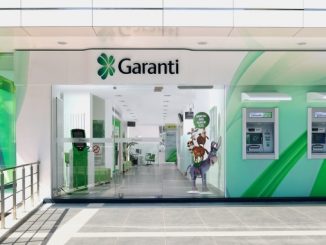
Norway’s DNB Boligkreditt issued the biggest green bond from a European bank yesterday (Tuesday), a EUR1.5bn green covered bond debut that provided the clearest evidence yet of a possible “greenium” in the asset class. Sweden’s Handelsbanken today unveiled a new “dark green” framework.
In some asset classes, such as senior unsecured debt, green bonds have been deemed able to in some circumstances achieve tighter pricing than conventional bonds in the primary market – even if the evidence is inconclusive – but in the euro covered bond market – where four green benchmarks had been priced prior to DNB’s trade – green deals have tended to be priced in line with conventional comparables, although compressed spreads resulting from the ECB’s asset purchase programme have been deemed a factor in this. Issuers and market participants have instead pointed to benefits of green bonds such as larger demand and greater momentum in bookbuilding.
However, syndicate bankers said DNB’s new issue offered more tangible evidence of such a green benefit.
“If you had asked me one year ago if there was a green pricing benefit in the covered bond market, I would have said no,” said a syndicate banker at one of DNB’s leads. “Today, I would say yes, we are getting there.
“It is a slow process and it is difficult to quantify, but we can see there is a green benefit in pricing just because the level of lines in the order book is getting bigger and bigger and subsequently the price sensitivity is diminishing. Alternatively, you have a benefit in terms of size. Today we can see there was a bit of both.”
The EUR1.5bn size makes it the largest green bond from a European bank and the largest euro-denominated green bond from any bank.
Leads Crédit Agricole, DNB, ING, LBBW and UniCredit launched the seven year issue with guidance of the mid-swaps plus 5bp area on Tuesday morning. After around 50 minutes, the leads announced that books had surpassed EUR1bn. The spread was subsequently set at 2bp with books over EUR1.8bn, excluding joint lead manager interest, before the size was set at EUR1.5bn (NOK14.2bn) with books above EUR2bn at re-offer, including EUR40m JLM interest, with over 100 accounts participating.
“We think it was a great success in all ways,” Thor Tellefsen, head of long term funding at DNB, told Sustainabonds. “The size was good, we had more than 100 investors in the book with very good coverage from green investors, the new issue premium wasn’t too high, and it has performed on the secondary market – so everyone is happy.”
The deal was launched into a market that had recovered from the volatility of recent weeks, but demand for previous deals had still been relatively slow to build.
“In the context of the current market environment, it was quite remarkable to see the traction we had with investors, with EUR1bn of orders in 40 minutes and then EUR2bn after two hours,” said Vincent de Vries, director, FIG DCM, at ING, which was also green bond advisor to DNB. “It’s been a while since we’ve seen a bookbuilding process like this.
“In particular, there was very strong traction from green accounts, whether that’s green pockets within larger investor groups or dedicated accounts that only come in when there’s a green flavour to a transaction.”
A syndicate banker away from the leads described the deal as being one of the best in the covered bond market for some time.
The deal comes after compatriot SpareBank 1 Boligkreditt (SpaBol) priced a EUR1bn five year conventional covered bond at 2bp on Monday with a final book of over EUR1.2bn, which helped bring out the “greenium” achieved by DNB.
“The difference between the two is not only the strong funding franchise of DNB but obviously also the green element,” said a lead syndicate banker, “which was instrumental here in terms of momentum, the level of granularity of orders and the absence of sensitivity to the price. It felt like no one could afford to miss out on this one.”
Bankers noted that the covered bonds of DNB and SpaBol tend to trade in line with each other, although some said that based on the profiles of the issuers DNB’s should trade tighter than those of its smaller compatriot.
DNB’s deal was seen as paying a new issue premium of 3bp-4bp, with DNB November 2024s seen at minus 2bp, mid, and September 2026s at minus 1bp, pre-announcement. Bankers noted this was slightly less than the 5bp new issue premium paid by SpaBol on Monday and by comparable conventional covered bonds issued last week.
“It seems investors were willing to sacrifice a bit of yield for the green element,” said a syndicate banker.
A banker away from the deal agreed the green element “definitely helped”, but suggested DNB would have been able to print almost as impressive a deal without the support of green investors.
“If you’re getting a EUR2bn-plus book, it is not like EUR1.5bn of that is going to be coming from pure green investors,” he said. “I think they would have gotten pretty close to this result anyway – maybe only the size would have been slightly smaller.”
Old investors, new green money
Banks were allocated 60% of the deal, asset managers 24%, insurance companies and pension funds 9%, and central banks and official institutions 7%. Accounts in Germany and Austria bought 51%, the Benelux 17%, the UK and Ireland 14%, the Nordics 8%, France 5%, Asia 3%, and others 2%.
According to calculations by ING, around EUR400m of orders came from “dark green” accounts, EUR400m from “medium green”, and EUR400m from “light green”.
“At least EUR1.2bn of the more than EUR2bn book was therefore related to green investors,” said Tellefsen. “We can easily say that for a non-green covered bond the book would probably have been EUR400m-EUR500m smaller, so the green element was definitely important.”
He noted that many of the accounts that participated in the deal had bought DNB covered bonds before, but that some came back in greater size than they would have for a conventional covered bond because they have dedicated green bond funds.
“We saw that many of our old investors brought their new green money,” he said. “I expect that the green investor base will continue to grow, as more and more fund managers have to set up green funds because investors want to invest green.”
De Vries added that there were tangible signs of market growth since January, when SpareBank 1 Boligkreditt sold the first and only other green Norwegian covered bond, a EUR1bn seven year issue.
“We definitely got the feeling that the market has progressed quite significantly in terms of green participation, even versus the SpareBank 1 green covered bond,” he said.
Tellefsen said it is too early to say how soon DNB Boligkreditt may return to the green covered bond market, but that the issuer currently has sufficient eligible collateral to issue EUR5.5bn of green bonds. Its pool of eligible assets is expected to be supplemented by a new green mortgage product, launched by DNB last week.
“The green investors we met also looked very positively at this green mortgage product,” he added.
“We expect this will help us collect even more eligible assets.”
DNB Boligkreditt unveiled its green bond framework on 29 May. Its framework is based on residential mortgages for the most energy efficient properties in Norway and is similar to that used by SpaBol, with both having been influenced by feedback from the Climate Bonds Initiative, which last week signed off its certification of SpaBol’s issue.
“DNB was very keen to ensure integrity and transparency in its approach for the inaugural green covered bond – including a pre-issuance CBI certificate and a technical report by green building consultant Multiconsult,” said Vlad Mitroi, vice president, sustainable markets unit, ING.
He said investors also appreciated the issuer’s “solid green bond framework” and its broader approach to sustainability, noting that DNB is ranked fourth out of 344 financial institutions by Sustainalytics.
“DNB are one of the leaders in terms of sustainability in their sector,” said Mitroi.
Handelsbanken unveils ‘dark green’ framework
Svenska Handelsbanken today (Wednesday) announced its intention to issue green bonds with the publication of a new green bond framework.
The Swedish bank said its framework includes the categories of clean transportation, sustainable forestry, green buildings, pollution prevention, renewable energy and sustainable water management.
“Handelsbanken recognises our responsibility towards the local communities and countries where we operate, while striving to reduce the impact we have on both people and the planet,” said Elisabet Jamal Bergström, chief sustainability officer at Handelsbanken.
The green bond framework has received a second opinion from Cicero, which gave it a “dark green” shading – the best ranking on its shading scale.



